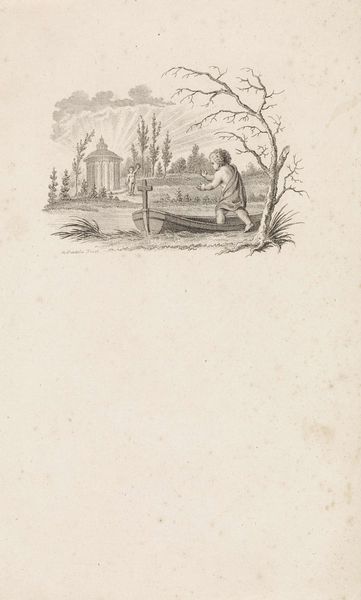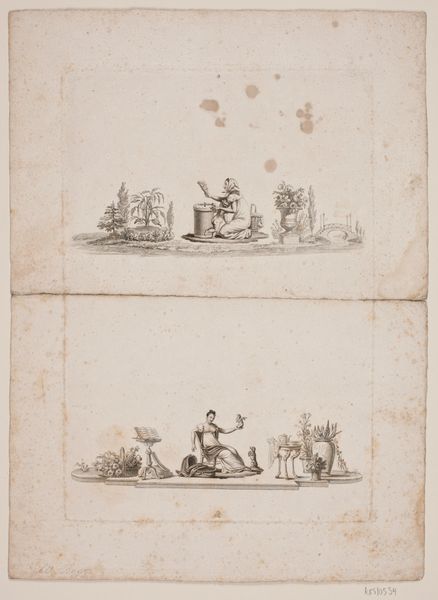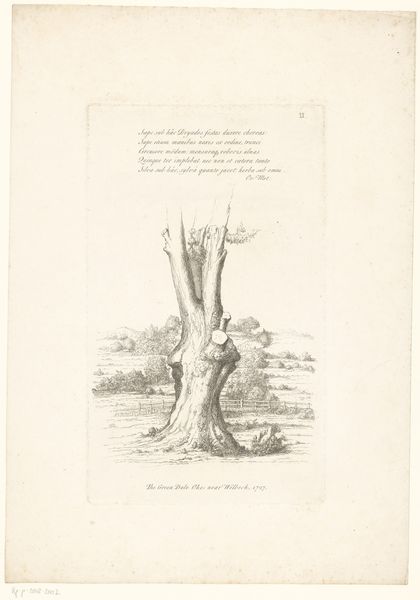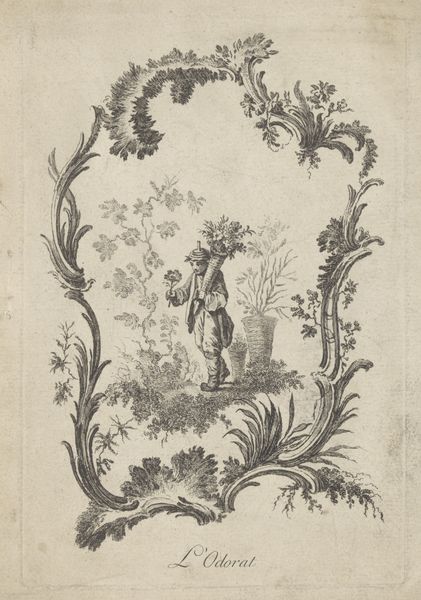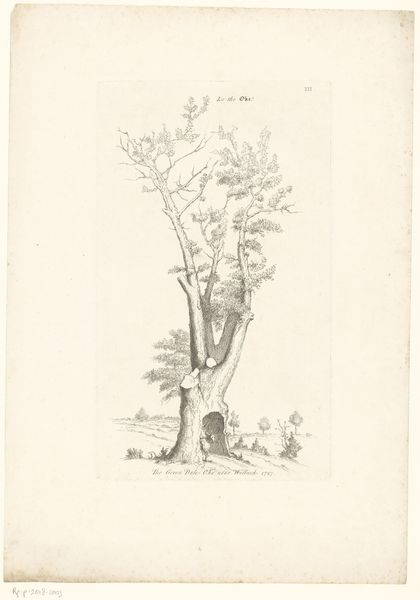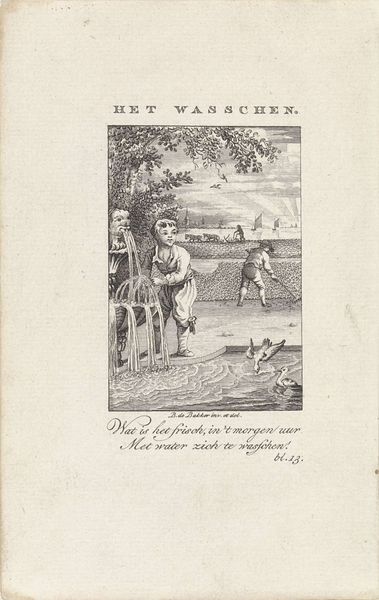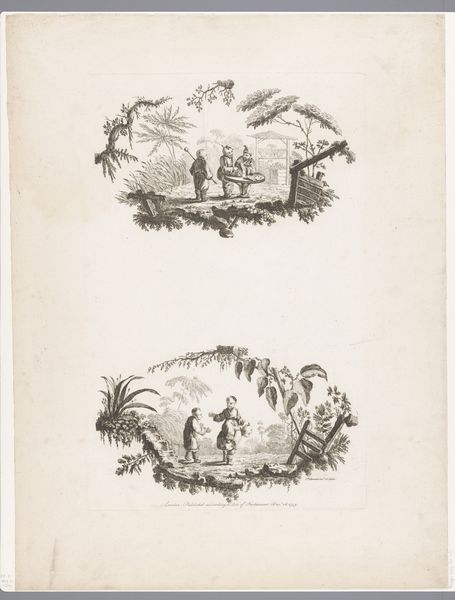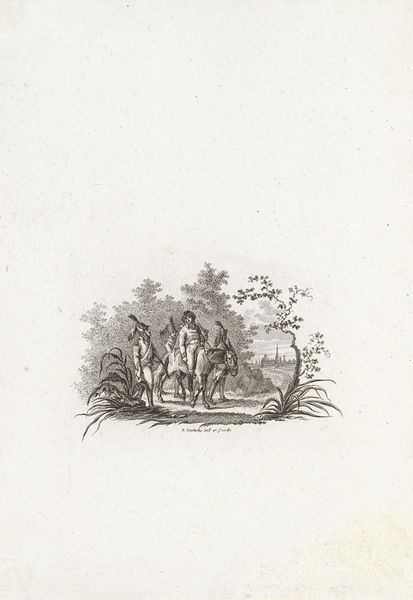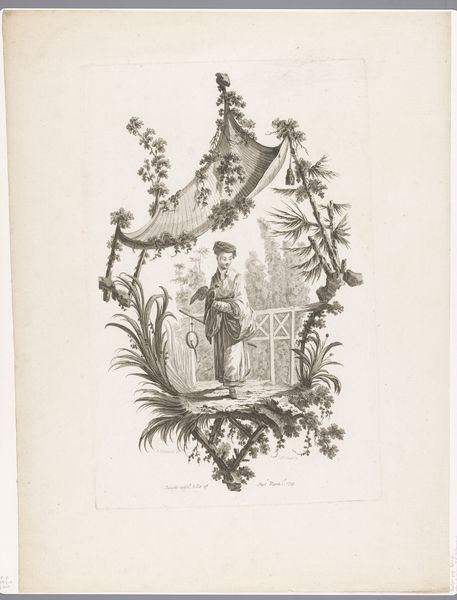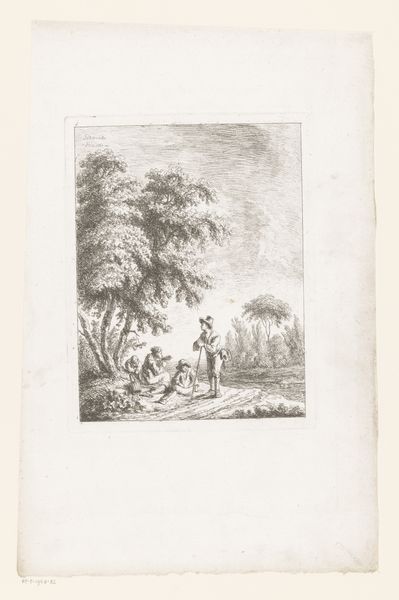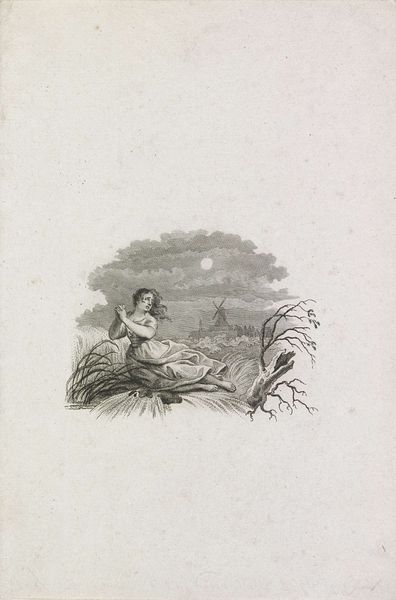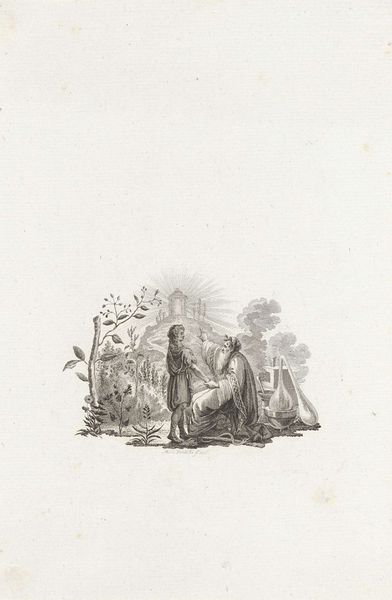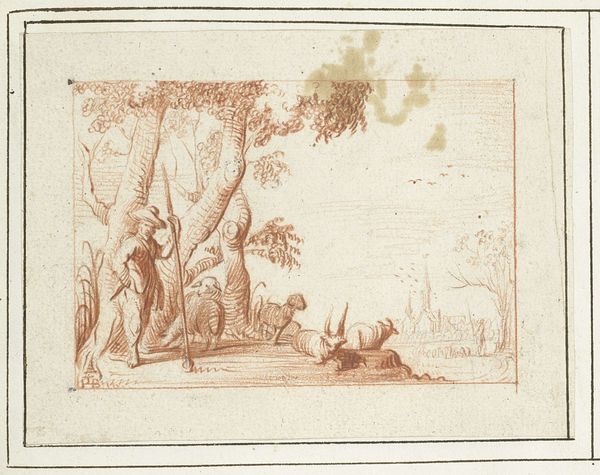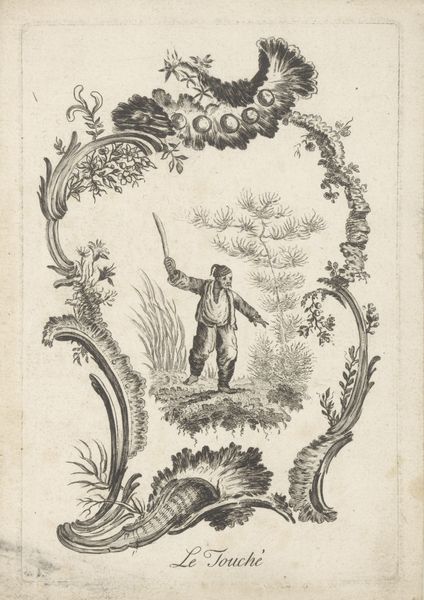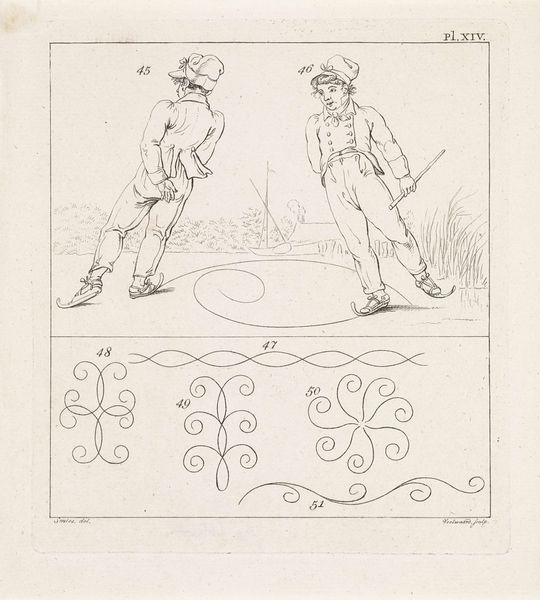
drawing, watercolor
#
portrait
#
drawing
#
water colours
#
dutch-golden-age
#
watercolor
#
coloured pencil
#
genre-painting
#
mixed media
#
watercolor
Dimensions: height 313 mm, width 204 mm
Copyright: Rijks Museum: Open Domain
Curator: The delicate watercolor before us is entitled "Herderspaar," or "Shepherd Couple," attributed to Gesina ter Borch, around 1652. It currently resides at the Rijksmuseum. Editor: It's strikingly naive, almost like a child's drawing. The washes are light, the figures a bit stiff... but somehow it’s very charming. Curator: Ter Borch's meticulous application of watercolour is important to consider. Note how she uses layered washes of pigment to define form, carefully observing and recording the details of daily life within her social context. What appears naive to some is actually skillful control of materials, influenced by a booming Dutch economy centered around merchant trade and class. Editor: But is the medium the message here? The structural composition—the sloping hill, the isolated tree—suggests a symbolic landscape, perhaps about isolation or even pastoral idealism. And look at the way she places the couple; there is no interlocking gesture to define the romantic status between them, just blank space and quiet distance. Curator: Consider, though, that Ter Borch's artistic production occurred during a time when women artists faced significant challenges. Her artwork, along with those by her peers, actively pushed back against male dominated trade guilds that excluded women from full participation in artistic patronage networks and societal opportunities. This piece speaks to Ter Borch's commitment to her art in a society designed to undervalue it. Editor: I see your point about the constraints Ter Borch faced, but the formal elements resonate. That thin application of watercolor almost echoes the ethereal qualities we find later in Symbolist painters. Curator: And that ethereal quality doesn’t exist in a vacuum. We need to think about the workshops, pigments, brushes and social expectation required to get it on the page! To only focus on composition disregards how artworks like "Herderspaar" functioned within a broader network of production. Editor: So, you’re suggesting that fully appreciating the work necessitates understanding the historical dynamics shaping it rather than internal factors? Curator: Exactly! It's about recognising how ter Borch manipulated and worked within the system to be visible and productive. Editor: Alright, point taken. Seeing the process as inherently intertwined gives me a greater sense of the artwork. Thank you.
Comments
No comments
Be the first to comment and join the conversation on the ultimate creative platform.
